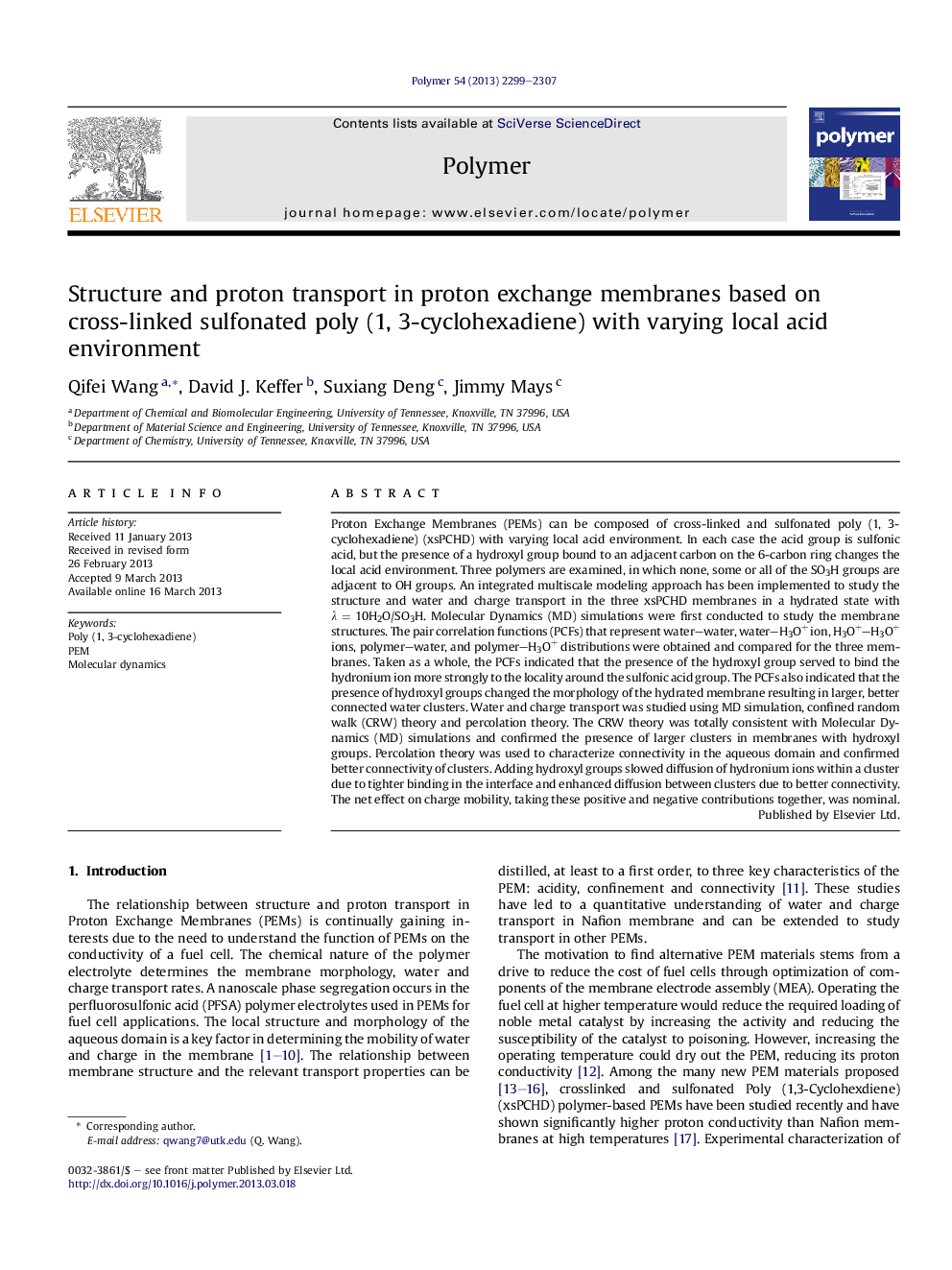| کد مقاله | کد نشریه | سال انتشار | مقاله انگلیسی | نسخه تمام متن |
|---|---|---|---|---|
| 5181742 | 1380970 | 2013 | 9 صفحه PDF | دانلود رایگان |

Proton Exchange Membranes (PEMs) can be composed of cross-linked and sulfonated poly (1, 3-cyclohexadiene) (xsPCHD) with varying local acid environment. In each case the acid group is sulfonic acid, but the presence of a hydroxyl group bound to an adjacent carbon on the 6-carbon ring changes the local acid environment. Three polymers are examined, in which none, some or all of the SO3H groups are adjacent to OH groups. An integrated multiscale modeling approach has been implemented to study the structure and water and charge transport in the three xsPCHD membranes in a hydrated state with λ = 10H2O/SO3H. Molecular Dynamics (MD) simulations were first conducted to study the membrane structures. The pair correlation functions (PCFs) that represent water-water, water-H3O+ ion, H3O+-H3O+ ions, polymer-water, and polymer-H3O+ distributions were obtained and compared for the three membranes. Taken as a whole, the PCFs indicated that the presence of the hydroxyl group served to bind the hydronium ion more strongly to the locality around the sulfonic acid group. The PCFs also indicated that the presence of hydroxyl groups changed the morphology of the hydrated membrane resulting in larger, better connected water clusters. Water and charge transport was studied using MD simulation, confined random walk (CRW) theory and percolation theory. The CRW theory was totally consistent with Molecular Dynamics (MD) simulations and confirmed the presence of larger clusters in membranes with hydroxyl groups. Percolation theory was used to characterize connectivity in the aqueous domain and confirmed better connectivity of clusters. Adding hydroxyl groups slowed diffusion of hydronium ions within a cluster due to tighter binding in the interface and enhanced diffusion between clusters due to better connectivity. The net effect on charge mobility, taking these positive and negative contributions together, was nominal.
Journal: Polymer - Volume 54, Issue 9, 19 April 2013, Pages 2299-2307